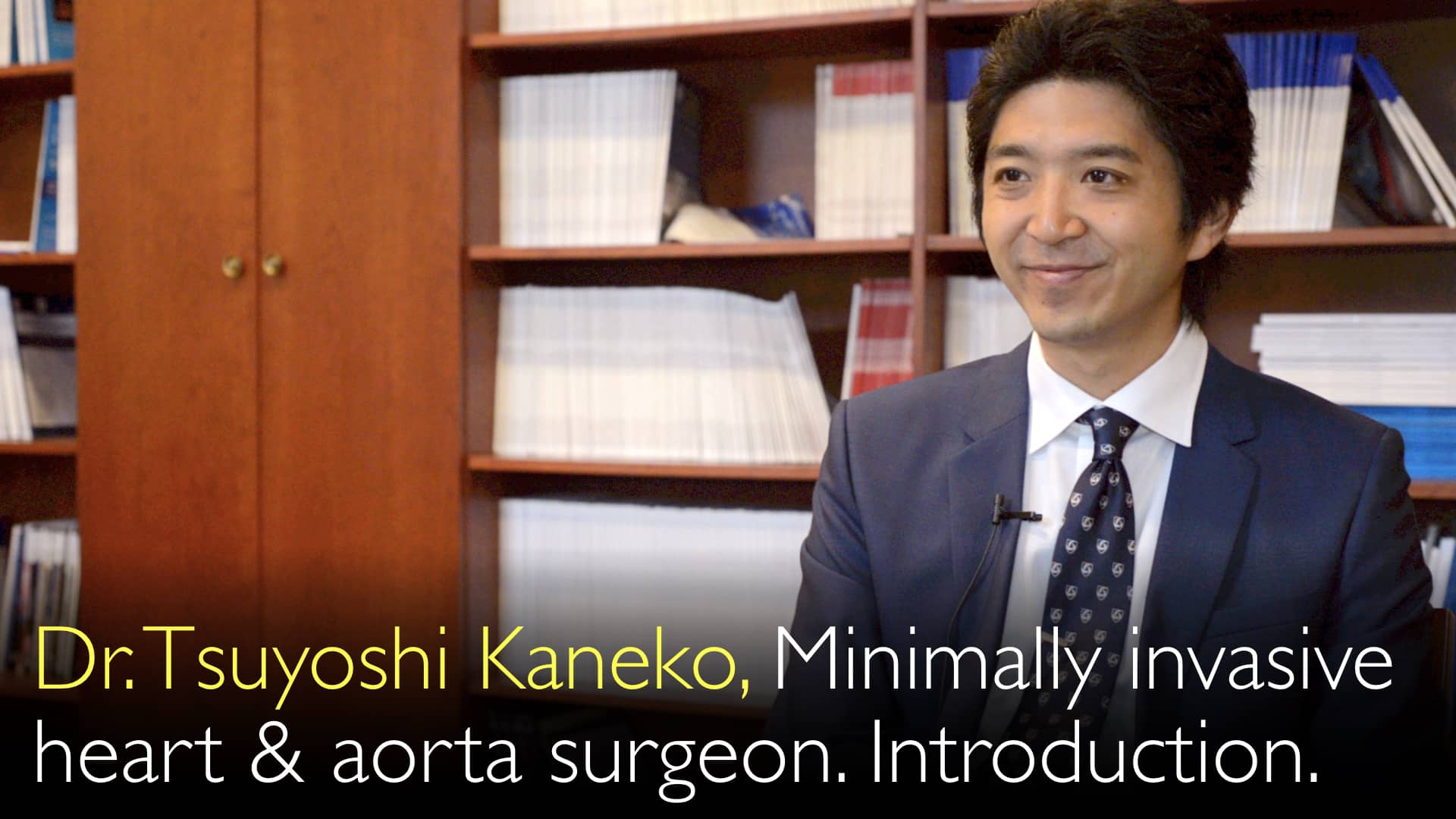Le Dr Tsuyoshi Kaneko, chirurgien cardiaque de renom, compare la chirurgie cardiaque ouverte traditionnelle et le remplacement valvulaire aortique par cathéter (TAVR) dans le traitement de la sténose aortique. Si la chirurgie à cœur ouvert a longtemps été la seule option, le TAVR — ou TAVI en Europe — offre désormais une alternative moins invasive. Le Dr Kaneko souligne que le TAVR est réalisé par voie fémorale, sans recours à la circulation extracorporelle, ce qui accélère la récupération. Il relève aussi son intérêt particulier pour les patients porteurs de valves biologiques dégradées, évitant ainsi les complexités d’une réintervention par chirurgie ouverte. Des études récentes suggèrent que le TAVR pourrait surpasser la chirurgie traditionnelle en termes de résultats, en faisant un choix privilégié pour de nombreux patients.
Comparaison entre le TAVR et la chirurgie à cœur ouvert pour la sténose aortique
Aller à la section
- Introduction au TAVR et au TAVI
- Comparaison des procédures : TAVR vs chirurgie à cœur ouvert
- Avantages du TAVR pour le remplacement valvulaire aortique
- TAVR valve-in-valve pour les valves tissulaires dégénérées
- Avenir du remplacement valvulaire aortique
- Transcription intégrale
Introduction au TAVR et au TAVI
Le remplacement valvulaire aortique par cathéter (TAVR), ou implantation valvulaire aortique par cathéter (TAVI) en Europe, est une procédure mini-invasive visant à remplacer la valve aortique. Le Dr Tsuyoshi Kaneko, MD, précise que le TAVR est réalisé par voie fémorale sous guidage radiographique, évitant ainsi une chirurgie à cœur ouvert et une circulation extracorporelle. Cette technique innovante est disponible aux États-Unis depuis 2011.
Comparaison des procédures : TAVR vs chirurgie à cœur ouvert
Le Dr Kaneko compare le TAVR à la chirurgie cardiaque conventionnelle, soulignant que les risques opératoires sont similaires. Cependant, le TAVR permet une hospitalisation plus courte et une récupération accélérée. Contrairement à la sternotomie requise en chirurgie ouverte, le TAVR, moins invasif, autorise généralement une sortie et un retour à la normale plus rapides.
Avantages du TAVR pour le remplacement valvulaire aortique
Le Dr Tsuyoshi Kaneko, MD, met en avant les atouts du TAVR, notamment son caractère mini-invasif et sa convalescence rapide. Les patients opérés par TAVR récupèrent souvent en quelques semaines, contre plusieurs mois pour la chirurgie ouverte. Cette récupération accélérée joue un rôle clé dans l’amélioration du pronostic et de la qualité de vie.
TAVR valve-in-valve pour les valves tissulaires dégénérées
Le TAVR valve-in-valve est indiqué chez les patients présentant une dégénérescence d’une valve aortique tissulaire, comme une bioprothèse porcine ou bovine. Le Dr Kaneko explique que cette intervention, réalisée en salle de cathétérisme cardiaque, contourne les difficultés techniques d’une réopération à cœur ouvert. Inadaptée aux valves mécaniques, elle offre une solution ciblée pour les valves biologiques défaillantes.
Avenir du remplacement valvulaire aortique
Le Dr Tsuyoshi Kaneko, MD, anticipe un avenir où la majorité des bioprothèses dégénérées seront traitées par TAVR valve-in-valve plutôt que par chirurgie ouverte. Cette évolution devrait optimiser la récupération et les résultats pour les patients, grâce à une sortie plus précoce et une meilleure réhabilitation postopératoire. La tendance vers des techniques mini-invasives comme le TAVR marque une avancée majeure en cardiologie.
Transcription intégrale
Dr Anton Titov, MD : La sténose aortique était autrefois traitée exclusivement par chirurgie à cœur ouvert, avec remplacement de la valve aortique. Cependant, les valves remplacées peuvent à leur tour dégénérer, nécessitant une réintervention. Le remplacement valvulaire aortique par cathéter, ou TAVR (appelé TAVI en Europe), offre une alternative.
Dr Anton Titov, MD : Comment comparez-vous la chirurgie à cœur ouvert avec des techniques interventionnelles plus mini-invasives comme le TAVI/TAVR ?
Dr Tsuyoshi Kaneko, MD : Excellente question ! Cette innovation, appelée valve transcathéter ou TAVR aux États-Unis, permet de remplacer la valve aortique par voie fémorale, sous scopie, sans ouvrir le thorax.
Dr Tsuyoshi Kaneko, MD : Elle se passe de circulation extracorporelle, évitant ainsi la chirurgie cardiaque ouverte. Commercialisée aux États-Unis depuis 2011, elle est désormais aussi approuvée pour les procédures valve-in-valve, utiles en cas de dégénérescence d’une valve tissulaire.
Par exemple, après un remplacement valvulaire antérieur par une bioprothèse porcine ou bovine, celle-ci peut dysfonctionner au bout de 10 ans. Le TAVR permet alors de la remplacer par voie fémorale—une option exclue pour les valves mécaniques.
Dr Tsuyoshi Kaneko, MD : Notre analyse des réinterventions valvulaires aortiques a montré un risque opératoire comparable entre chirurgie ouverte et TAVR valve-in-valve, mais une hospitalisation plus courte et une récupération plus rapide avec le TAVR.
Dr Anton Titov, MD : Depuis, plusieurs études sur le TAVR avec valves de dernière génération ont confirmé des résultats supérieurs à ceux de la chirurgie ouverte.
À mon avis, la réopération pour remplacement valvulaire aortique est techniquement complexe : il faut traverser des tissus cicatriciels, retirer l’ancienne prothèse et en poser une nouvelle dans une aorte déjà fragilisée.
Dr Tsuyoshi Kaneko, MD : La procédure valve-in-valve, en revanche, est relativement simple et réalisée en salle de cathétérisme. La récupération est nettement plus rapide. Je prévois que la plupart des bioprothèses dégénérées seront à l’avenir traitées par TAVR valve-in-valve, mettant fin aux réinterventions à cœur ouvert. Cette transition améliore la récupération, permet une sortie plus précoce et un meilleur confort postopératoire.
Dr Tsuyoshi Kaneko, MD : Tout à fait ! Après un TAVR valve-in-valve, les patients récupèrent en semaines plutôt qu’en mois, comme c’est le cas après une chirurgie ouverte. Du point de vue de la convalescence, cette approche mini-invasive offre indéniablement un avantage significatif.








